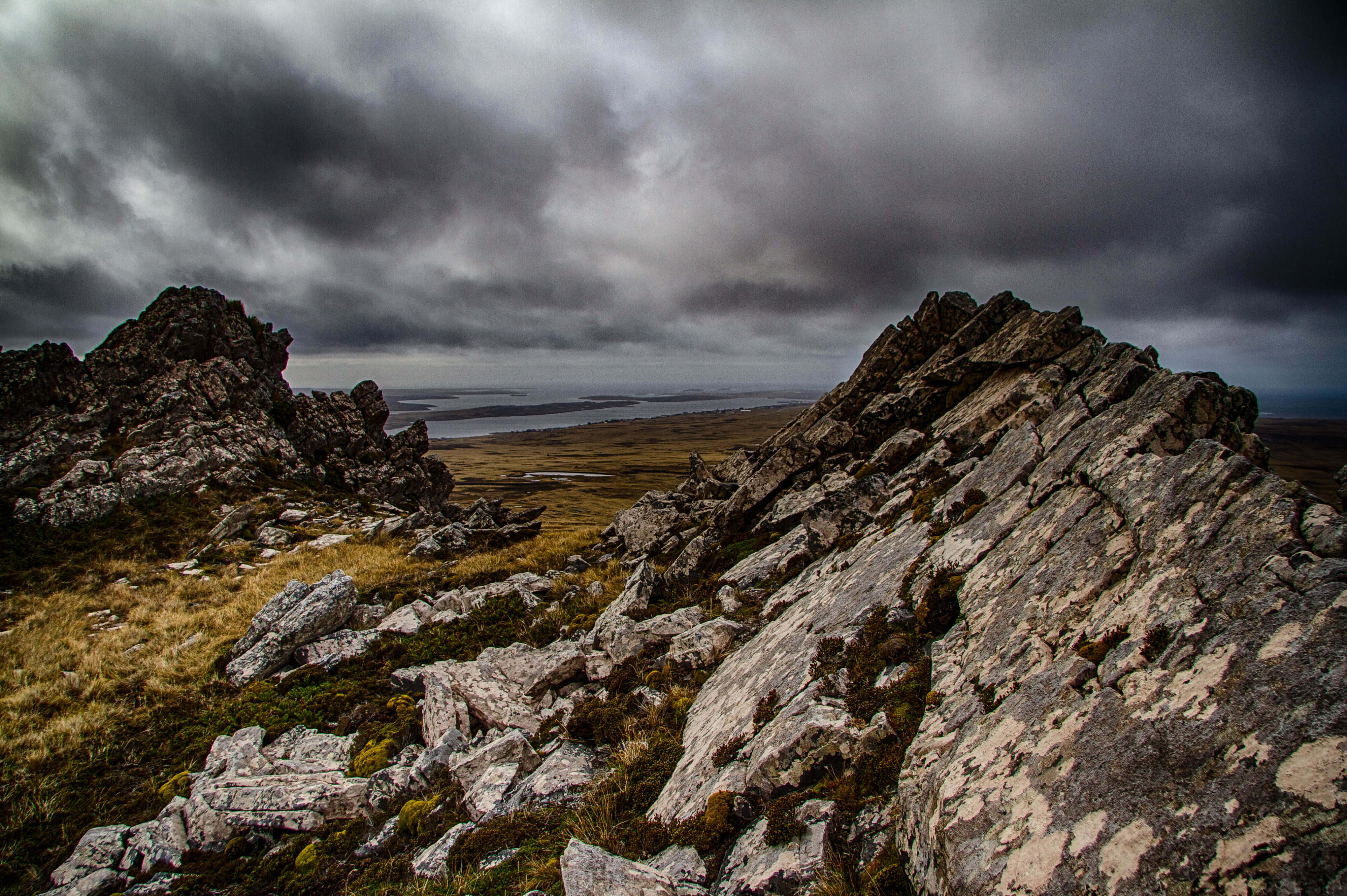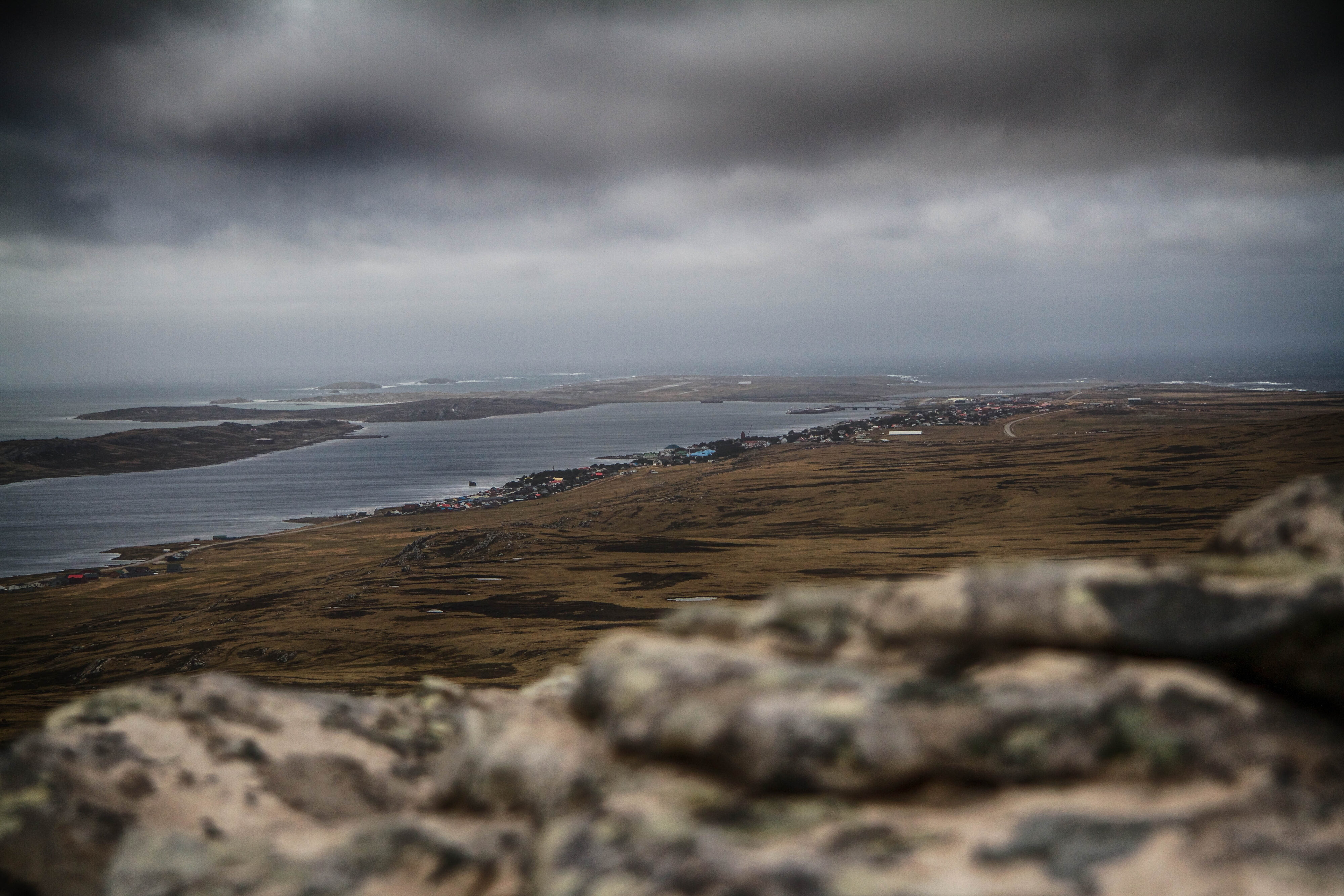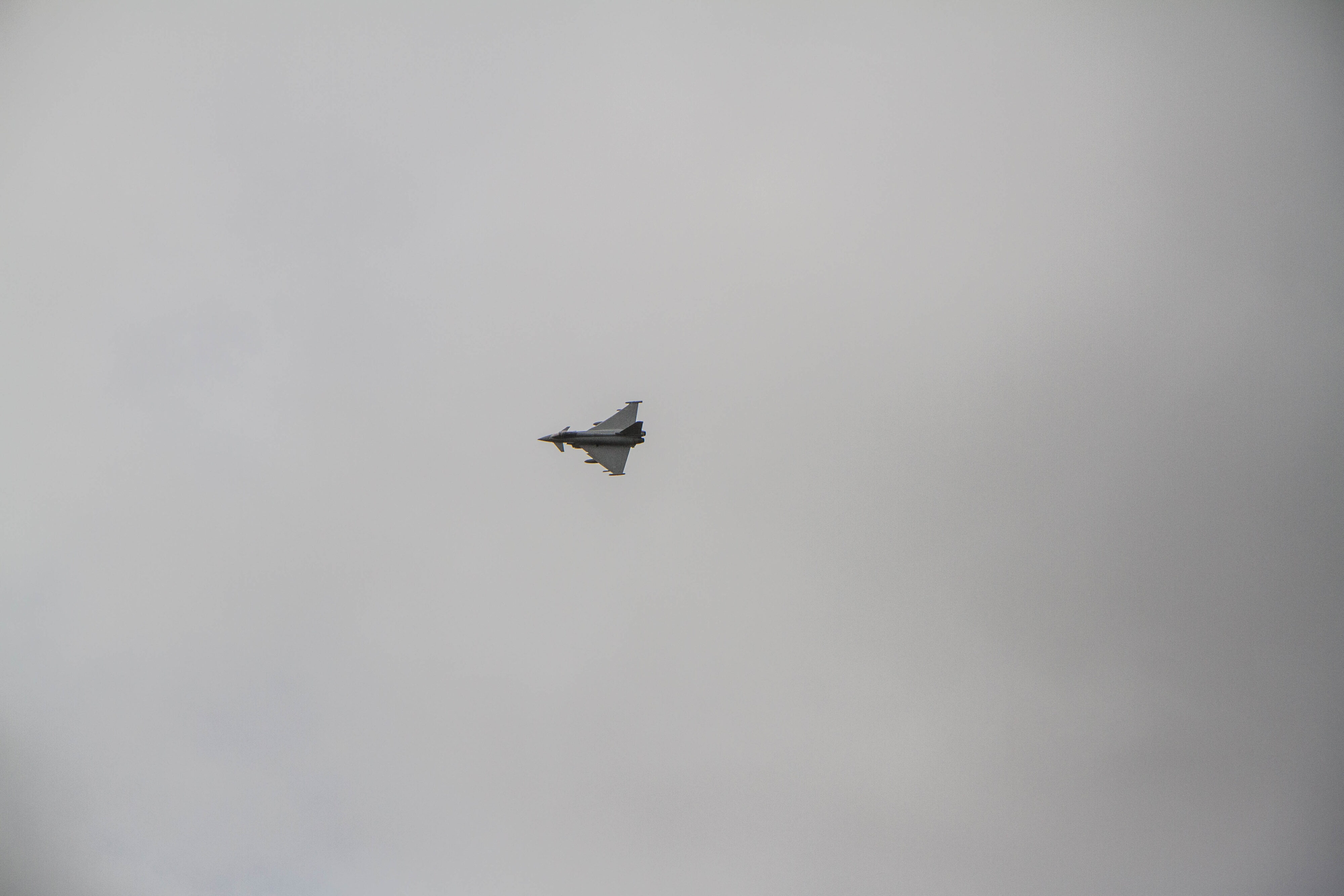Falklands blog for Sunday April 14 2013
The day dawned gloomy and windy. Not good portents for walking up some local peaks.
Then, blue sky appeared and the bimble was a go.
Out to Moody Brook and then a long steep climb up to Mount William. Layers of granite tilted precariously to the sky. Not a difficult scramble, and the views to the north and west were breathtaking. Total dominance of the area from on high, but the crest is too narrow for any serious placement of artillery.
The mobile phone signal is strong on Mount William; though it is difficult to have a conversation when a pair of Typhoons are roaring around the peaks. Low flying aircraft are barely tolerated in the UK, but here the fighters are welcomed as a very visible and noisy reassurance of continuing support to the Falkland Islanders.
The memorial cross on Mount Tumbledown is visible to the south from William. As we strolled down to the valley and then followed the rover tracks up, the wind began to make its presence felt. It was not cold, but the wind was cutting. I groped my way along the ridge, buffeted by fierce blasts; it did not help that my eyes were filled with tears from the wind blast.
If anything, the wall of wind was even more powerful at the memorial, funnelled by the gulley. Standing still for a photograph was only slightly less difficult than trying to take a photograph and keeping the camera steady. I wanted a picture of myself standing in the same spot as 17 years ago, when the weather was balmy and sunny on that distant April day in 1996.
We did not linger but scrambled down to the valley to seek shelter. This is the Falklands autumn; I dread to think what it must have been like for those poor Argentine conscripts huddled on this bleak place in the Falklands winter 30 odd years ago. Poorly prepared and with rock bottom morale (Napolean said .. “The morale is to the materiel as three is to one”) their fate was sealed.














